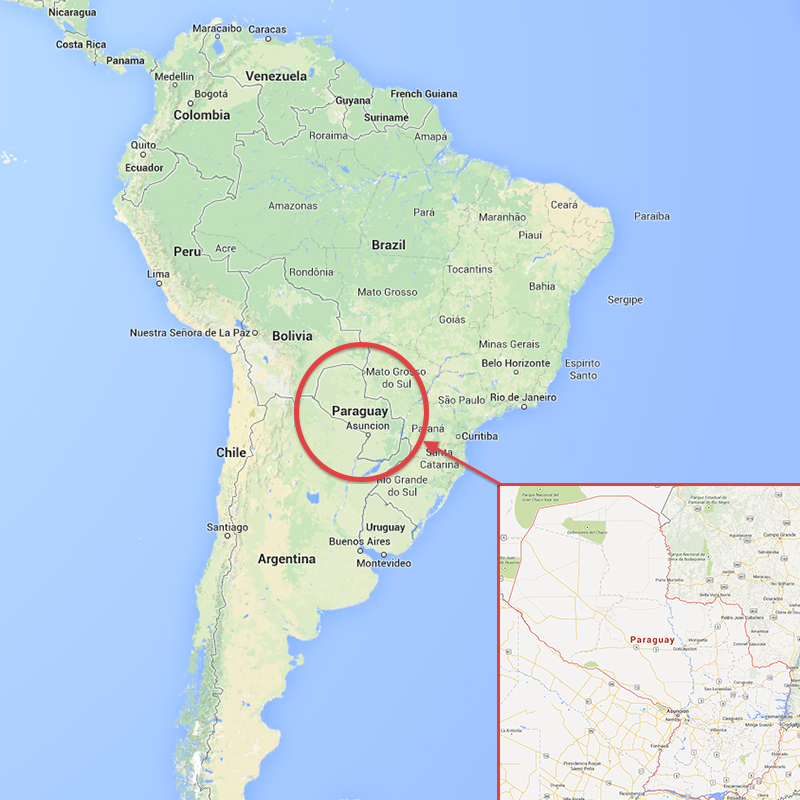EspañolDespite an external climate of uncertainty and a forecast of a 0.5 percent decline in economic growth for Latin America, a 4.5 percent growth projection for 2014 has spirits buoyed regarding the Paraguayan economy. These figures come from the 2013 Updated Economic Balance for Latin America and the Caribbean report by CEPAL — an independent agency of the United Nations that oversees economic policy for Latin America and the Caribbean — published in April.
The report shows that Paraguay’s expected growth is almost double the average expected growth of other economies in Latin America (2.7 percent), and it greatly exceeds the growth achieved by the country in 2013 (2.5 percent). This contrasts with a downward revision for the regional forecast with respect to that estimated by the agency at the end of 2013 (2.7 percent), including the two largest economies in Latin America: México (3 percent) and Brazil (2.3 percent).
The report is in line with another forecast conducted by the Central Bank of Paraguay (BCP) in a report released on April 24, which predicts growth of 4.8 percent for the South American country — just above the projection made by the international organization.
According to BCP, “the forecast is based on the dynamics of livestock production, exports and construction, and to a lesser extent, the moderate increase in agriculture.”
Rafael Lara, Acting Chairman of the BCP, said: “It is clear that with our growth rate of between 4.5 percent and 4.8 percent, we will contribute to raise the growth trend [for the region]. While others, such as Brazil and Argentina, which will grow less, will contribute to lower it.”
Amilcar Ferreira, a Paraguayan economic consultant with Intelligent Business Solutions (SEI), told the PanAm Post that the country’s economic growth has been driven by three leading factors:
“Beef exports, which are expected to gain momentum starting with the recovery of the sanitary status (after the foot and mouth disease outbreak of 2011) and the reopening of the markets, mainly Chile, Russia and the European Union; second, by the rise of private construction, mainly corporate buildings, apartments, major shopping centers and infrastructure for agribusiness; and as a third factor, by increasing agricultural production, mainly soybeans, which show a slight increase over the previous year.”
The high growth forecast for Paraguay has even more merit considering the uncertainty in the external context referred to by CEPAL’s report. This uncertainty is mainly due to the expected fall in commodities’ prices, so, in principle, the most affected countries in Latin America will be those in the the Southern Cone that rely on agricultural exports.
In contrast, countries such as Mexico will be relatively less exposed to this sort external shock, as most of its exports are manufactured products. However, it still had a lower growth forecast.
Unveiling the Enigma of Paraguayan Growth
The optimistic growth projection for Paraguay stands in stark contrast to several recent developments in its political situation and economy. In mid 2012, the country was suspended from the regional trade bloc of the Southern Common Market (MERCOSUR) for the dismissal of former President Fernando Lugo through an impeachment trial that stirred great controversy in the region. For this same reason, it was also suspended from the Union of South American Nations (UNASUR).
The country rejoined UNASUR and MERCOSUR almost a year later, after the celebration of general elections in which the incumbent president, Horacio Cartes, arrived to power. The president, who belongs to the traditional, agrarian Colorado Party, negotiated the ratification of a project for Venezuela’s entry into Mercosur that had been locked by the Paraguayan Congress, as part of a political agreement for Paraguay’s return to the regional body.

According to the Heritage Foundation’s 2014 report, Paraguay has considerable institutional barriers to the development of a market economy.
“Corruption is widespread, and the government’s attempts to reduce smuggling and go after suspected terrorist groups in the tri-border area with Brazil and Argentina have had little success.” In fact, according to a Transparency International report released in December, Paraguay is the most corrupt country in the continent after Venezuela.
However, Paraguay progressed 0.9 percent in the Heritage Foundation’s index of economic freedom (with particularly encouraging improvements in the freedom to invest and the management of public finances) since last year, and is ranked 15th of 29 countries in South America, Central America, and the Caribbean. Its score is also above the world’s average for economic freedom. Its tax burden is 17.9 percent, according to a January report from the Organization for Economic Cooperation and Development (OECD), well below neighboring countries such as Brazil (36.3 percent) and Argentina (37.3 percent) .
Venezuela and Argentina: The Worst in The Region
For both economies, the 2013 Economic Balance Update for Latin America and the Caribbean is not optimistic at all.
In the case of Argentina, the official currency devaluation late last year, and the subsequent increase in interest rates are anticipated by the report to cause a contraction in the short term.
“In the Bolivarian Republic of Venezuela, foreign exchange shortages, among other factors, have contributed to slowing down economic activity. These countries are the ones where it was necessary to adjust the economic growth projection downwards the most,” the study concluded.
 Versión Español
Versión Español












